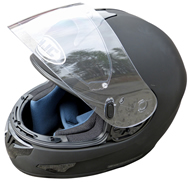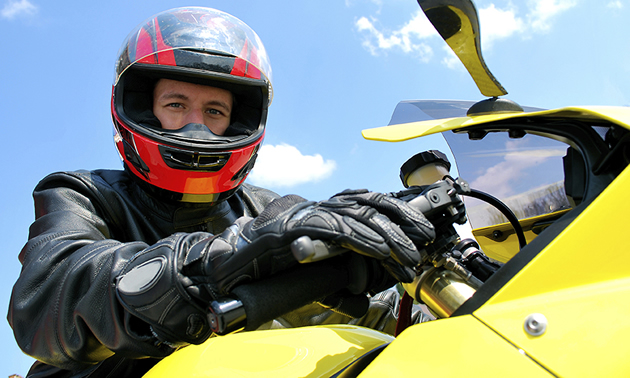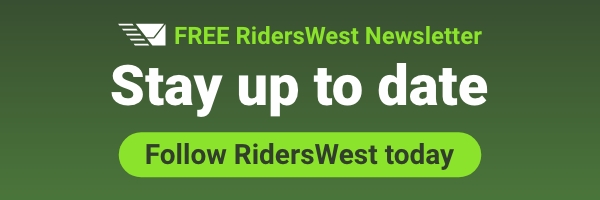The Province of British Columbia is trying to reduce the number of motorcycle fatalities and improve rider safety by introducing new laws regarding motorcycle helmets and passengers.
As of June 1, 2012, all motorcyclists in B.C. are required to wear helmets that meet safety industry standards. Operators and passengers must wear a helmet that displays one of the following safety certifications: United States Department of Transportation (DOT), Snell M2005, Snell M2010 or United Nations Economic Commission for Europe (ECE). This means that riders can no longer wear novelty helmets—such as beanies, skull caps and skid lids—that do not meet safety industry standards.
Motorcycle seating laws have also changed. Passengers are required to sit astride the passenger’s seat behind the operator with their feet placed on the foot pegs or floorboards at all times—which means that passengers, including children, who cannot reach the foot pegs or floorboards are no longer allowed to ride motorcycles.
According to Shirley Bond, B.C.'s minister of justice and Attorney General, motorcycle fatalities increased by about 57 per cent from 1996 to 2010. She said the new regulations are aimed at saving lives.
“B.C.’s new safety regulations are the result of extensive consultations between the superintendent of Motor Vehicles, the B.C. Coroners Service, ICBC, police and other road safety partners,” said Bond. “Avid riders, road safety advocates, emergency room physicians, police and families of riders are among those who were actively involved in pushing for safety improvements aimed at keeping our loved ones and our roads safe. They have offered very positive feedback about these changes.”
Police are enforcing the new laws as of June 1. The fine for motorcyclists who are not wearing proper helmets is $138, and the fines for not meeting the new seating requirements range from $109 to $121. Riders who violate seating requirements may also have their motorcycle impounded.
There is a new regulation with regards to motorcycle licence plates as well. In May 2011, ICBC started issuing licence plates with a larger font size, and the fine for improper display of a licence plate or an illegible licence plate was set at $196. As of June 1, 2012, it is $230.
The provincial government will also be moving forward with a graduated licensing program, Bond said, and it will include power restrictions.
“We look forward to continuing our dialogue with our partners to develop a specific plan for a graduated licensing program that works for B.C. riders, their families and the industry that supports their passion,” said Bond.
Safety first

Helmets that meet certified safety standards are designed to prevent trauma and reduce fatalities. These helmets have a rigid head covering with a strong, stiff outer shell—which protects the head by distributing the impact throughout the surface of the helmet—and they have a crushable liner to absorb the energy of the impact.
According to the Province of British Columbia, full-face helmets provide the best protection in a collision and bright-coloured helmets are easier for other road users to see; however, full-face helmets and visors are not mandatory in B.C. and the new regulations allow riders to wear any colour of helmet.
In addition to ensuring that your helmet meets DOT, Snell or ECE helmet safety standards, you should keep in mind the following tips when buying a helmet, according to the B.C. government:
- Go for fit. Your helmet should feel snug around the entire head. Wear it for 10 to 15 minutes in the store to ensure no pressure points develop; these can cause headaches while riding. Be aware that the padding may compress over time and the fit may become looser.
- The helmet chin strap is important; it keeps the helmet on your head if you’re in a crash. Check the chin strap mechanism. Make sure it’s easy to fasten, release and adjust. Be sure it can be fastened securely.
- Avoid buying a used helmet. It may have been in a crash and the damage may not be obvious.
- Already own a helmet? You should replace it if it’s been dropped, in a crash or showing signs of wear.








Comments